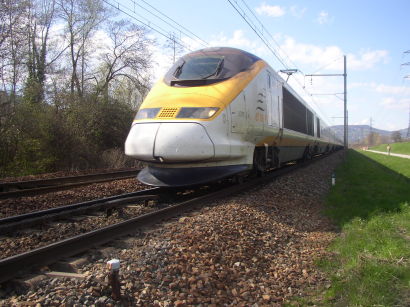DIFFICULTIES with expanding an operational railway and a population surge around Milton Keynes are two major reasons why the Government now acknowledges a need for a new line between London and the West Midlands – heralding a possible first stage in a new high-speed route to the North and, perhaps, Scotland.
According to the Department for Transport, a high-speed line could cut London-Birmingham journey times to well under an hour – “with commensurate time savings to various destinations beyond Birmingham”.
And “over time, subject to the agreement of the Scottish Executive, such a line could be extended to reach Scotland, further transforming connectivity within the UK”.
As well as serving a link into Heathrow, the new route would also open up opportunities for continental trips. “A new line offers the potential to link with the High Speed 1 route from St Pancras Inter-national to the Channel Tunnel and the European High Speed rail network.
“Such a connection could improve rail journey times and connectivity between the Midlands and the North and key European destinations,” says the DfT.
Last year, then transport minister Tom Harris said he was “modally agnostic”. Now the DfT says: “A new rail line will expand a transport mode that is generally more energy-efficient than short-haul air and long-distance road journeys.”
The DfT also now points out that the cost of building a new high-speed line “is not significantly greater than building a conventional one” – but it says a magnetic levitation (maglev) system, as used in Shanghai, would cost three times as much to build and operate, and could not be integrated with the conventional rail network in the UK or the rest of Europe.
Focusing on a possible early start on a high-speed line from London to the West Midlands, DfT says London-North West is Britain’s “single most important and heavily used” transport corridor.
And forecasts for peak-hour loadings on the WCML show that the section between Lon-don and the West Midlands is “already by far the most intensively used inter-city line in the country (and) is likely to reach its absolute capacity limit by the mid-2020s – even after the £8.8 billion upgrade”.
But more capacity is needed because of major housing and population growth around Milton Keynes and in the South Midlands – “the largest growth area in the UK.”
With a population already over 1.6 million, the area anticipates 224,000 new homes and 192,000 new jobs by 2021.
Big population growth helps swing opinion towards HS2
4th February 2009


